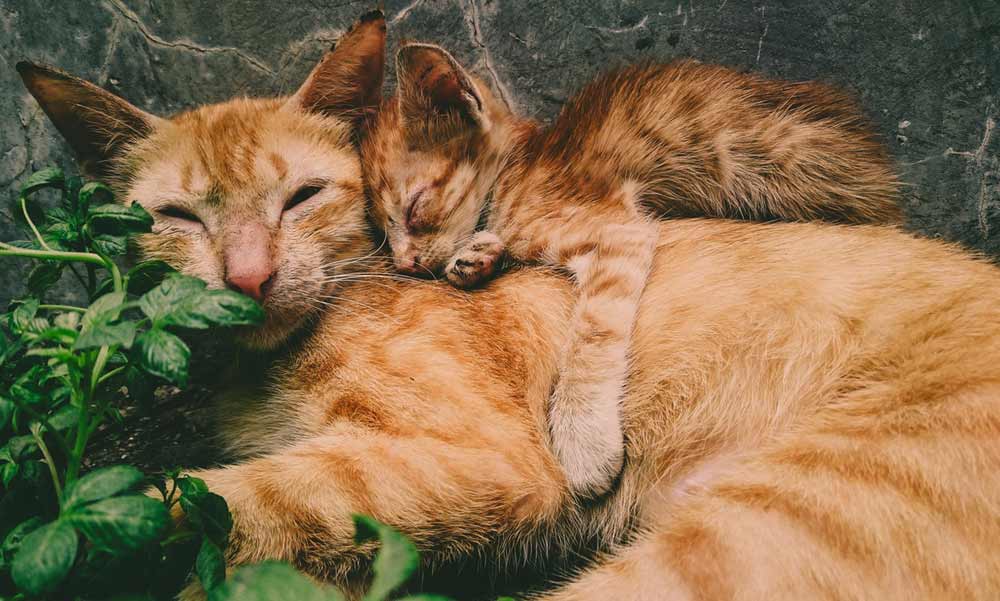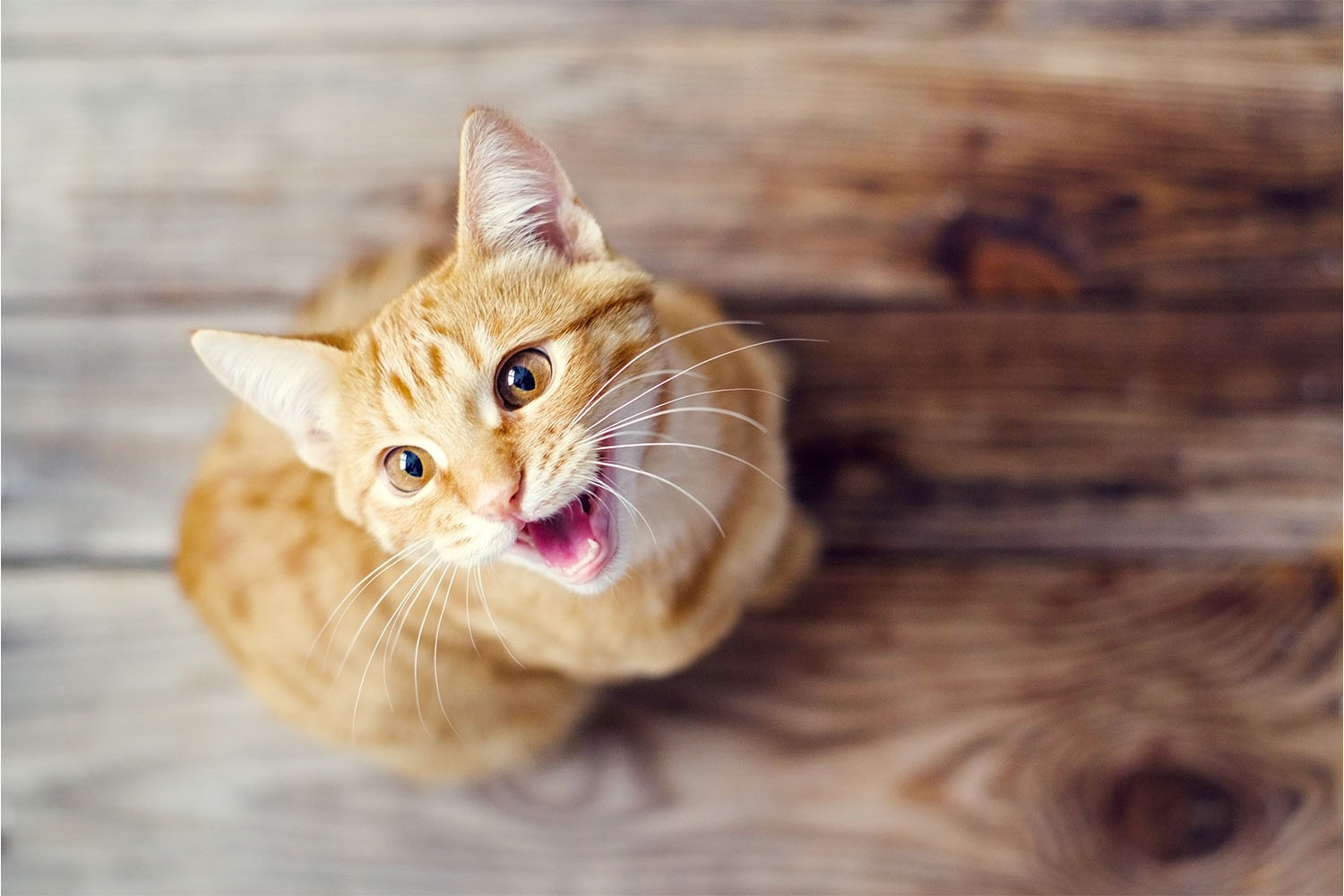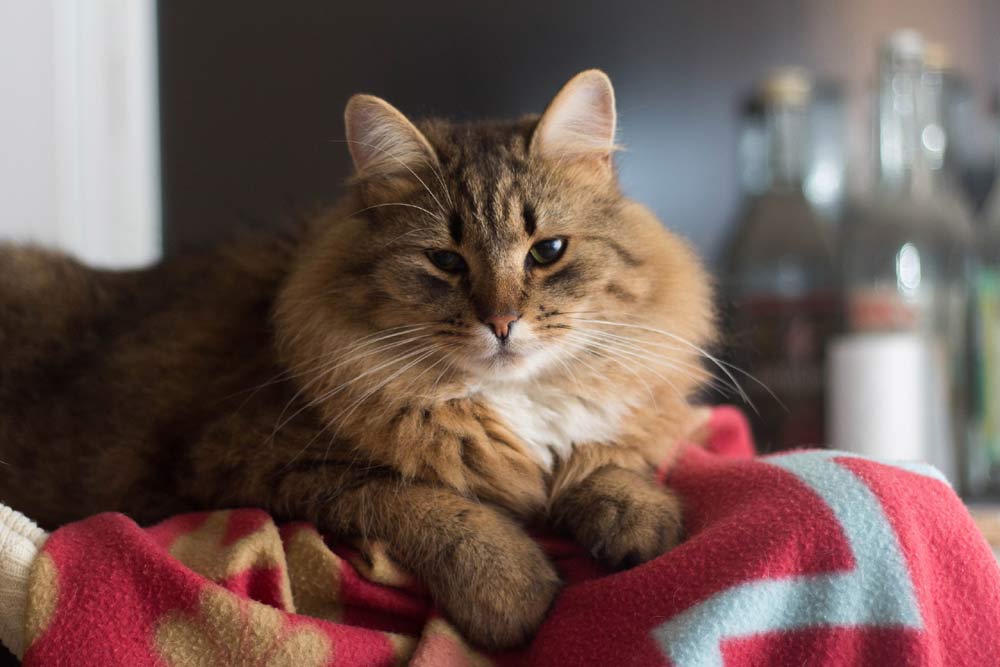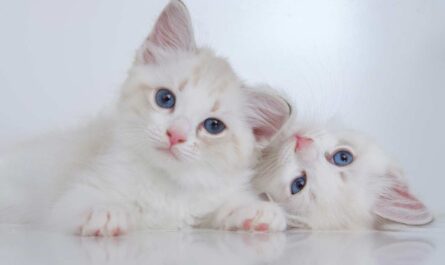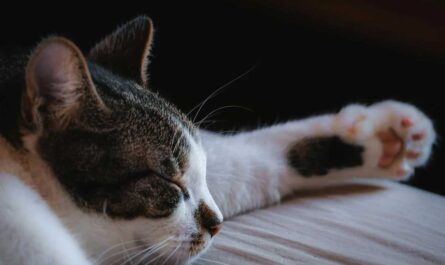What is caterwauling and what are some of the most common reasons cats do it? Anyone fortunate enough to share their living space with a feline companion is well aware of the myriad ways these enigmatic creatures communicate. From the soothing purr that resonates with contentment to the insistent meowing that signals various needs, cats possess a diverse repertoire. They effortlessly convey their desires by jumping in our faces, demonstrating their playful antics by knocking items off counters, and, of course, manifesting their affectionate nature by weaving between our legs as we navigate through our daily routines. Each behavior serves as a unique feline expression, fostering a subtle yet profound bond between human and cat. However, among these varied forms of communication, one stands out in its ability to capture attention like no other—the piercing and often unsettling sound of a cat caterwauling, a phenomenon that is particularly pronounced during the stillness of the night.
Etymology of Caterwauling: Unveiling Linguistic Roots
The term “caterwauling” possesses a linguistic allure that might evade the awareness of certain individuals. Unveiling its origins unveils a tapestry woven with linguistic threads from Middle Dutch and Middle English. “Cater,” rooted in Middle Dutch, signifies a tomcat, while “waul,” a term hailing from Middle English, embodies the act of yowling. This amalgamation birthed the curious term that captures the distinctive vocalization of our feline companions.
Caterwauling: Beyond Meows and Purrs
Delving into the depths of feline communication, caterwauling emerges as an enigmatic expression, distinct from the familiar meow or purr. It manifests as a sharp, often resonantly loud vocalization, evoking an auditory tapestry that strays far from the soothing cadence of typical cat sounds. Some feline renditions mimic cries of distress, creating an unsettling dissonance that resonates uncomfortably with most human sensibilities. It’s a vocal symphony that tends to be met with less-than-enthusiastic responses.
Caterwauling: A Discordant Symphony of Feline Expression
Picture a cat, not serenading with a melodic meow or contented purr, but engaging in a discordant symphony of caterwauling. The sound, reminiscent of a creature in agony, possesses a shrillness that pierces the auditory realm. This peculiar vocalization becomes even more disconcerting when it transforms into a repetitive refrain, echoing through the air within short intervals. The term “caterwauling” aptly encapsulates this dissonant feline expression, evoking a sense of disturbance and perplexity.
Do male or female cats caterwaul?
Caterwauling, an egalitarian feline vocal pursuit, embraces both genders within its sonic realm. Intact males, driven by the instinctual scent of a female in heat, embark on this melodic journey. Simultaneously, intact females contribute their lyrical rendition of caterwauling during estrus, an auditory allure aimed at attracting potential male companions. Yet, the gender-agnostic nature of caterwauling transcends the realms of mating rituals. Both males and females may engage in this vocal dialogue to seek attention, express distress, articulate pain, or grapple with behavioral complexities. In the multifaceted symphony of caterwauling, gender becomes but one note in the intricate composition.
Why do cats caterwaul?
The feline symphony of caterwauling unfolds as a complex overture, a vocal tapestry woven with myriad intentions. At its essence, caterwauling is the feline clarion call, an auditory semaphore seeking attention. This attention may be a beacon for potential mates if the cat is in search of a companion. It could also be an entreaty to the humans in their realm, a vocal manifestation alerting them to unmet needs, pain, confusion, or a looming medical concern. In this intricate vocal dance, caterwauling becomes the multifaceted language through which a cat articulates its varied emotional and physical states.
What sound is a caterwaul?
The resounding cadence of caterwauling resonates as a distinctive auditory journey. This feline vocalization manifests as a wailing, yowling sound, often echoing with pronounced volume. Its character, a symphony of a long drawn-out howl interspersed with the emotive notes of a whine or a cry, evokes a melodic resonance that distinguishes it from the ordinary feline vocal repertoire. The rhythmic repetition of this sound, often punctuating the air in multiple sequences within a brief span, adds to its unique signature.
The Unpleasant Harmony of Repetitive Caterwauling
As the cat persistently engages in its vocal gymnastics, the once sporadic caterwauling transforms into a disquieting rhythm. The repetition, akin to an unsettling harmony, resonates over and over again within a condensed timeframe. This relentless barrage of sound adds an extra layer of discomfort to an already disconcerting experience. The auditory landscape becomes an arena of perplexity as the caterwauling persists, weaving an intricate tapestry of feline expression that challenges the usual conventions of cat communication.
Caterwauling: A Concluding Cadence
In the realm of feline vocalizations, caterwauling stands as a peculiar and often disconcerting chapter. From its linguistic roots to the dissonant symphony it produces, caterwauling defies the familiar melodies of meows and purrs. It introduces an element of unpredictability and discomfort, challenging our perception of feline communication. Whether perceived as an expression of distress or a peculiar feline whim, caterwauling adds a layer of complexity to the rich tapestry of human-animal interaction.
Caterwauling Unveiled: A Symphony of Loud, Repeated, and Dramatic Vocalizations
Caterwauling, at its core, is an auditory spectacle that distinguishes itself with its intensity and repetition. It is not merely a casual meow or a gentle purr; rather, it is a vocalization that demands attention. The acoustics of caterwauling can be jarring, echoing through the silence of the night with a dramatic flair that can be both perplexing and alarming. This distinct form of feline expression serves as a communicative tool, one that transcends the ordinary and compels us to unravel the underlying reasons behind this symphony of sound.
Decoding the Language of Caterwauling: Attention, Heat, or Underlying Issues?
The motivations behind a cat’s decision to embark on a caterwauling escapade are as diverse as the feline personalities themselves. Primarily, cats may engage in this loud vocalization as a means to garner attention—a declaration of their presence that reverberates through the walls of our homes. However, it’s crucial to recognize that caterwauling isn’t a mere bid for attention; it can also be a manifestation of a cat in heat. This biological imperative amplifies the intensity and frequency of the yowls, transforming them into a primal call echoing the cyclical rhythm of reproduction.
Yet, the reasons behind caterwauling aren’t limited to the realms of attention-seeking and biological urges. Cats may resort to this vocal manifestation due to underlying medical or behavioral issues. Unseen ailments or unresolved anxieties can find an outlet in the haunting echoes of caterwauling, making it imperative for pet owners to delve deeper into the psyche of their feline companions.
Guiding Principles for Cat Owners: Enrichment, Neutering, and Veterinary Care
In the pursuit of maintaining harmony in the feline-human cohabitation, understanding and addressing caterwauling becomes essential. Fortunately, there are practical steps that cat owners can take to mitigate this intense vocalization. Enrichment, both mental and physical, is a key aspect of keeping cats engaged and content. Providing stimulating toys, interactive play sessions, and designated spaces for exploration can divert a cat’s attention from resorting to caterwauling.
For those feline friends still intact, neutering emerges as a crucial intervention. This not only curtails the intensity of caterwauling associated with mating instincts but also contributes to overall feline well-being. Simultaneously, vigilant owners should be attuned to any signs of medical or behavioral concerns. Seeking prompt veterinary attention ensures that potential issues are identified and addressed, preventing the haunting echoes of caterwauling from becoming an enduring soundtrack in the lives of both cats and their human companions.
Most Common Reasons Cats Do caterwauling
Cat caterwauling, a mysterious symphony that often pierces the tranquility of households, has left many pet owners bewildered. This enigmatic vocalization, characterized by a mix of yowls, moans, and howls, can be both perplexing and intriguing. Unveiling the reasons behind this feline phenomenon requires a nuanced exploration of various factors that influence a cat’s behavior.
In unraveling the tapestry of cat caterwauling, we find a complex composition woven with threads of instinct, emotion, and communication. Each yowl, moan, or howl is a nuanced expression of a cat’s needs, desires, and state of being. To truly understand and address cat caterwauling, pet owners must embark on a journey of observation, empathy, and a deep appreciation for the intricate language of our feline companions.
1. Unmet Environmental Needs: Caterwauling for Stimulation
Within the domesticated confines of our homes, where feline royalty reigns, a peculiar conundrum arises — the unmet environmental needs of our regal companions. Cats, by nature, are imbued with an insatiable curiosity that propels them into the realms of exploration. The lack of adequate environmental stimulation, especially for indoor felines, sets the stage for a discordant performance of discontent. The result: the resonant cadence of caterwauling, a vocal manifestation of their unmet desire for mental and physical engagement.
In the vast tapestry of a cat’s day, where monotony threatens to overshadow the vibrant hues of their innate feline spirit, caterwauling emerges as a cry for intervention. It is a desperate plea for a symphony of diversions — an enthralling overture of toys, a crescendo of climbing structures, and the harmonious interplay of interactive play. To unravel the mystery of this vocal unrest, one must embark on a mission to enrich their surroundings. Transforming the domestic landscape into a playground of sensory delights, where each nook and cranny is imbued with potential fascination, is the key to turning the dissonant notes of boredom into a harmonious melody of feline contentment.
8. Reproductive Urges: The Irresistible Symphony of Nature’s Call
The primal cadence of cat caterwauling, a symphony echoing through the silent night, finds its origins in the inexorable pull of reproductive urges. Within the intricate tapestry of feline instincts, unspayed female cats, draped in the ethereal cloak of estrus, emit distinctive and plaintive cries. These alluring vocalizations, resonating with an almost mystical quality, are not mere sounds but rather the siren song of procreation. It is an ancient dance scripted in their genetic code, an orchestration of nature’s calling card, drawing potential mates like moths to a flame. The symphony, therefore, transcends mere noise; it is a biologically encoded communication tool, a mesmerizing overture in the timeless feline courtship ballet.
9. Breed-Specific Tendencies: Caterwauling Variations
In the intricate tapestry of feline behavior, the thread of vocalization weaves a narrative uniquely tailored to each cat breed. Caterwauling, an expression as diverse as the feline kingdom itself, manifests in distinctive variations, revealing the nuanced language spoken by different breeds. To navigate this auditory landscape, one must embark on a journey through the corridors of breed-specific tendencies, where Siamese cats emerge as eloquent orators in the feline parliament.
Siamese cats, with their regal bearing and vocal prowess, are renowned for transforming the act of caterwauling into an art form. Their vocalization transcends mere communication; it is a symphony of opinions, a ballet of sentiments pirouetting through the air. When a Siamese cat engages in nocturnal discourse, it is not merely a call to arms—it is a proclamation of feline sovereignty, a declaration that reverberates with the authority only they can muster.
10. Territorial Disputes: The Auditory Battleground of Feline Dominion
In the nocturnal realm of the feline world, where shadows merge with the echoes of the unknown, caterwauling transforms into a vocal manifesto, marking the boundaries of territorial empires. Cats, those enigmatic creatures, wield their vocal prowess as a declaration etched in soundwaves, a proclamation echoing through the labyrinth of streets and alleys.
The battleground of territorial disputes is not merely physical but an auditory coliseum, with male cats standing as gladiators engaged in an intense symphony of caterwauling. Their cries, infused with an intensity that pierces the stillness, become the harmonious expression of dominance, a declaration of control over coveted realms. As the night unfolds, the air itself becomes a canvas painted with the vibrato of feline territoriality.
What You Can Do to help Your Cat
Spaying, a common procedure, is known to halt the heat cycles in female cats, alleviating behaviors like caterwauling, rolling on their backs, and attempting escape. This intervention not only curtails the feline reproductive drive but also prevents unwanted mating behaviors that can be disruptive and challenging for cat owners to manage. Cat accessories on Amazon
The Disconcerting Symphony of Caterwauling
The unsettling sounds of caterwauling can stir feelings of upset, worry, and frustration among cat owners. Beyond being a mere annoyance, these vocalizations may signify an underlying issue. Addressing the matter requires a thoughtful approach, and fortunately, there are practical tips to ease the plight of those with a caterwauling feline companion.
Veterinary Insight: A Crucial Step
Given that caterwauling can be an indicator of pain or illness, seeking professional advice is paramount. A visit to the veterinarian is strongly recommended, particularly when the caterwauling behavior is sudden or unusual. Veterinarians conduct thorough physical examinations and may recommend bloodwork or urine tests to unearth any potential health concerns triggering these distressing vocalizations.
Spaying as a Responsible Solution
A prevalent cause of caterwauling is a female cat in heat. Opting for spaying is not only a responsible decision for those not intending to breed kittens, but it also carries additional health benefits. Spaying reduces the risk of certain cancers and infections in female cats, eliminates estrus-related behaviors, and contributes to population control, reinforcing the importance of this surgical intervention. See why thousands of cats love BoxCat
Behavioral Strategies: Enrichment and Attention
For neutered cats without health issues, caterwauling may be an attention-seeking or behavioral matter. Effectively managing this requires a multifaceted approach. Enrichment activities, such as climbing structures, interactive games, and puzzle feeders, can engage and divert their focus. Scheduled quality time, be it through grooming, play, or cuddles, satisfies their need for closeness and bonding. Products like Feliway or calming aids can further encourage calm and restful behavior. Addressing territorial concerns is also crucial, with a comprehensive guide available for introducing new pets into the household.
Decoding Feline Communication: From Normalcy to Concern
While some cats may caterwaul as part of their usual communication, a sudden onset of this behavior raises concerns. Such abrupt changes suggest potential stressors or pain, necessitating vigilant observation and prompt intervention. Cat owners should remain attuned to these auditory cues, recognizing deviations from the norm as potential indicators of underlying issues.
Other Interesting Articles
- Ocicat Cat Breed Profile: Health, Facts, Traits, Groom, Care
- Ojos Azules Cat Breed Profile: Health, Traits, Groom, Care
- Oregon Rex Cat Breed Profile: Health, Traits, Groom, Care
- Oriental Bicolor Breed Profile: Health, Traits, Groom, Care
- Oriental Longhair Breed Profile: Health, Traits, Groom, Care
- Oriental Shorthair Breed Profile: Health, Traits, Groom, Care
- Peterbald Cat Breed Profile: Health, Traits, Groom, Care
- Pixie-Bob Cat Breed Profile: Health, Traits, Groom, Care
- Ragamuffin Cat Breed: Health, Facts, Traits, Groom, Care
- Russian White Cat Breed Profile: Health, Traits, Groom, Care
- Serengeti Cat Breed Profile: Health, Traits, Groom, Care
- Savannah Cat Breed Profile: Health, Traits, Groom, Care
- Selkirk Rex Cat Breed Profile: Health, Traits, Groom, Care
- Singapura Cat Breed Profile: Facts, Coat, Traits, Groom, Care
- Sokoke Cat Profile, Traits, Health, Facts, Grooming, Care
- Somali Cat Profile, Traits, Health, Facts, Grooming, Care
- Turkish Angora Cat Profile, Traits, Health, Grooming, Care
- Sphynx Cat Breed: Profile, Traits, Health, Grooming, Care
- Turkish Van Cat Breed: Profile, Traits, Grooming, Care
- Toyger Cat Breed: Profile, Traits, Health, Grooming, Care
